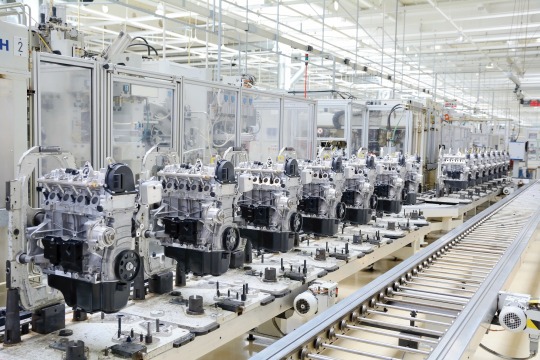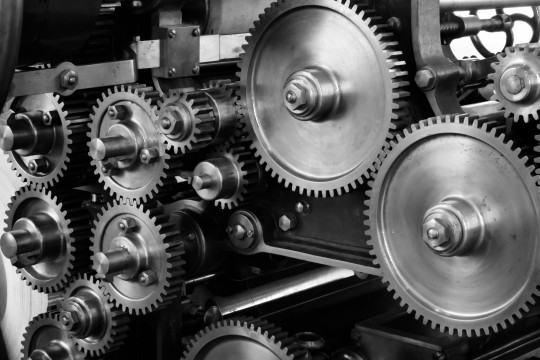Don't wanna be here? Send us removal request.
Text
The Basics of Gear Manufacturing

Choosing the right gear material is vital to the strength and durability of the gear. The material must be durable, easy to process and have the correct tensile strength. There are several materials used in gear manufacturing, such as steel, aluminum and plastics. Continue reading more about Harcliff Mining Services here.
Generally, there are two main processes used for gear manufacturing: forging and machining. These processes are used to produce gears in various sizes and shapes. The processes are highly specialized and the materials must be chosen carefully to achieve the desired quality and strength. Some of the main materials used for gears include aluminum, stainless steel, cast iron and brass. These materials are used for both lightweight and heavy duty applications. Some of the gears manufactured are used in industrial machinery, automobiles and clocks.
Forging is the process of producing gears by applying tremendous force to the work metal. It works best for gears that have a diameter of six to 10 feet. Forging has been used to produce spur, helical and bevel gears. It has been used to produce gears from aluminum, brass, titanium and low-alloy steel. The process has increased the load-carrying capacity of gears and has improved fatigue properties. Using this process, a gear can be manufactured at a high speed and with minimal material losses. It takes approximately 24 hours to cool a raw forged gear to the proper temperature. It is then ready to be machined.
Another process is powder metallurgy, which is highly efficient and can be used to produce gears for large quantities. The disadvantage of this process is that the gears can only support so much load. However, it is one of the cheapest ways to produce gears. Using this process, a gear is shaped by rotating a multi-edge cutter. It can be used to produce individual gear teeth or internal gears. Check out more information linked here about gear manufacturing.
The processes used to produce gears have evolved over the years. For example, specialized tooth cutting machinery was developed in the late nineteenth century. Today, gear manufacturing is a highly specialized field and many companies specialize in certain types of gears. This is because gears are used in many different applications and each application has its own set of requirements. Depending on the application, a gear may need to be post-processed to correct errors. This may include dimensional correction or heat treatment to improve the fatigue characteristics of the gear.
Roll forming is another process used for gear production. This process is used to produce automobile transmission gears. The gears produced through this process are very high quality. This process can produce gears with surfaces as smooth as 0.10 um. The process has become very popular thanks to advancements in CNC machining. The process has many advantages over gear cutting. One of these advantages is the ability to create a gear mold, which can be used to create many gears of the same size.
Other processes used for gear production include casting and hobbing. Casting is the preferred process for large gears, but it is costly. Hobbing is used for external spur and helical gears. It is also used to produce large coarse-pitch gears. It is a rapid process that requires the use of a rotating cutter. If you probably want to get more enlightened on this topic, then click on this related post: https://en.wikipedia.org/wiki/Gear_manufacturing.
0 notes
Text
Choosing the Right Manufacturing Process for Gears

Choosing the right manufacturing process for gears depends on a few factors. It is important to consider the cost, durability, and accuracy of the gears. The type of material selected for the gears is also important. Materials with high strength and durability are best suited for the manufacturing process. These include steel, aluminum, cast iron, and plastics. Follow this link: https://harcliff.co.za/, to discover more about gear manufacturing.
Several processes are used to create gears, including broaching, forming, and forging. Broaching is the quickest and most common method for machining gears. This process uses a multi-tooth cutting tool, called a broach, to cut the blank into the shape needed. Broaching is typically used to produce internal gear teeth, but it can also be used to create external teeth.
Forging is a metalworking process that uses a high energy rate. The ram generates a tremendous force, which deforms the work metal at very high velocities. The final shape of the forging is developed in just a few blows. The gear is then allowed to cool to the ambient temperature before machining. It can take up to 24 hours for the forged gear to cool.
Forging is best suited for gears that are between 6 and 10 feet in diameter. The process can also be used for gears that are smaller in diameter, but will require precision guidance. The forged gears can be finished using machining or stamping. Forging can also be used to produce blank gears.
Gear shaping is a process that makes it possible to increase production rates. This process uses a multi-tooth cutter to produce internal and external gears. This process is useful for creating spur gears, herringbone gears, cluster gears, and ratchet gears. However, gears that are more complicated, such as worm gears, don't have the best results using gear shaping. Click here for more details about gear manufacturing.
Cast iron and steel are the most common materials used in gear manufacturing. These materials offer a high strength-to-weight ratio, and offer good resistance to wear. These materials can be heat treated for increased fatigue properties. The best choice for gears that will be used in high-volume applications is ground steel. These materials are also competitive in price.
Powder metallurgy is another method for manufacturing gears. This method is simple and efficient, but has size limitations. The initial cost for powder metallurgy is relatively high. This process is not suitable for making gears that are large in size or will be used in high-load applications. This process can be used for gears that are used in medical devices, small electronics, and tool kits. However, it can be difficult to achieve close tolerances for finer pitch pinions.
Another process for manufacturing gears is additive manufacturing. This process can create conventional gears as well as non-circular gears. It can also be used to make customized shafts and other features. The process is used in many mechanical projects, and is available for affordable prices. The 3D printers used in this process are high quality and widely available.
Gear manufacturing is a complex process that requires extreme precision. It can be performed in a variety of ways, including forging, forming, and rolling. Each type of manufacturing process has its own set of advantages and disadvantages. You can learn more about this topic here: https://www.britannica.com/technology/manufacturing.
0 notes
Text
Types of Gear Manufacturing

Whether you're working on a truck, a car, or a large appliance, gears are an important component of the mechanical system. Gears come in various types and are made of a variety of materials. These materials include steel, aluminum, plastic, and powdered metals. The selection of the material is important to the performance of the gear. The material must be durable and have the correct coefficient of friction. The material should also have the proper tensile strength and endurance. View here to learn more about Harcliff Mining Services.
Precision hot-forged gears are used in many industries. These gears offer high-strength, low-material losses, and improved fatigue characteristics. They are also cost-effective. They are often used in the automotive industry, energy and mining industries, and aerospace. They are also used in the industrial and medical industries. They are especially effective in low-load applications.
Forging is one of the most common processes used in gear manufacturing. Forging is a forming process that involves pulling a metal bar through a series of dies. The bar is then squeezed into the shape of the die. The material outside the dies is work-hardened. The forged gear then undergoes heat treatment to increase the strength and toughness of the tooth. The forged gear can take up to 24 hours to cool to room temperature. The gear is then placed in a trimming nest and ready for finish machining.
Forging can be used to produce gears that are simple, such as spur gears. It is also used to produce gears with complicated shapes. Forging also produces blank gears. It is a very effective method for producing gears from low-alloy steels. Forging has also been used to produce gears from aluminum alloys, stainless steel, titanium, and brass.
Forging can also produce precision-forged gears. These gears are used in the automotive, aerospace, energy, mining, and truck industries. They are also used in clock mechanisms, timers, watches, and small appliances. Depending on the application, they may also require post-processing, such as heat treatment. Click here to learn more about gear manufacturing.
Precision hot-forged gears can be manufactured in a wide range of materials, including H11 tool steel, H13 tool steel, and stainless steel. These materials are hardened to a temperature above 1050 deg F. They have improved fatigue characteristics and load-carrying capacity. They are often used in high-volume low-load applications. They are also used for automobile transmission gears. Typical gears with integral teeth have a diameter of 64 to 267 mm and have 0.13 to 0.51 mm stock on the flank of each tooth. The wear life of gears with integral teeth is generally longer than gears from conventionally forged blanks.
Fine blanking, also known as fine-edge blanking, is another forging process that involves press-forming metal into a desired shape. Fine blanking is used to make bevels and multiple gear sets. These gears are used in hydraulic, medical equipment, and automotive. Fine blanking requires two dies. The first die forms the shape, while the second removes the gear from the sheet metal. The blanking process is similar to cold extrusion but the shape can be contoured to increase load-bearing capacity. Knowledge is power and so you would like to top up what you have learned in this article at: https://en.wikipedia.org/wiki/Gear.
1 note
·
View note